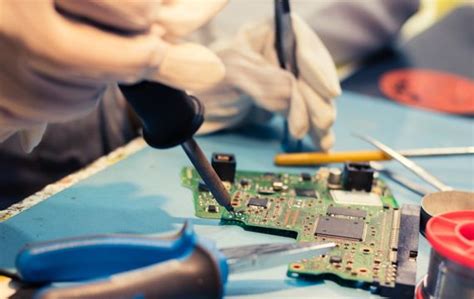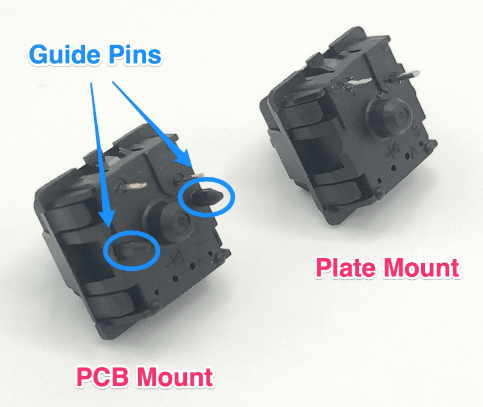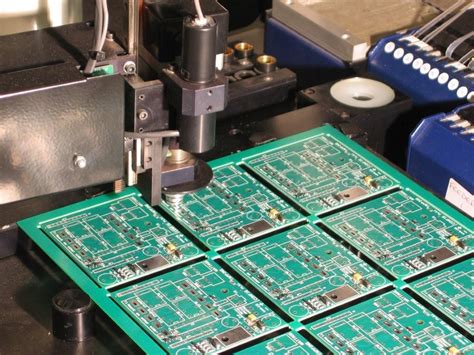Types of Relays: A Comprehensive Guide
Introduction to Relays
Relays are fundamental components in electrical and electronic systems that serve as electrically operated switches. They play a crucial role in controlling circuits by opening and closing contacts in another circuit. Since their invention in 1835 by American scientist Joseph Henry, relays have evolved into numerous types, each designed for specific applications across industries such as telecommunications, automotive, industrial automation, and power systems.
The basic principle of a relay involves using a small electrical current to control a much larger current, providing isolation between the control circuit and the load circuit. This characteristic makes relays invaluable for protecting sensitive control equipment from high-power circuits they may be switching. Modern relays come in various forms, from traditional electromechanical designs to sophisticated solid-state versions, each offering unique advantages depending on the application requirements.

Electromechanical Relays
General Purpose Relays
General purpose relays are the most common type of electromechanical relays found in industrial and commercial applications. These versatile components typically consist of an electromagnet, an armature, a spring, and a set of electrical contacts. When voltage is applied to the coil, the resulting electromagnetic field pulls the armature, causing the contacts to change state—either opening or closing the circuit.
These relays are characterized by their:
- Moderate switching speeds (typically 5-15ms)
- Contact ratings from a few milliamps to 30 amps
- Voltage ratings up to 250V AC or 30V DC
- Mechanical life expectancy of 1-10 million operations
General purpose relays are widely used in appliance control, HVAC systems, and industrial machinery where their reliability and cost-effectiveness make them ideal for basic switching operations.
Reed Relays
Reed relays represent a specialized type of electromechanical relay that uses hermetically sealed reed switches. These switches consist of two thin, ferromagnetic blades (reeds) enclosed in a glass tube filled with inert gas. When a magnetic field is applied (typically from an external coil), the reeds attract each other and make contact.
Key features of reed relays include:
- Extremely fast operation (0.5-2ms)
- Compact size compared to conventional relays
- High reliability due to sealed contacts protected from environmental contaminants
- Low contact resistance (typically <100mΩ)
- Long operational life (up to 10^8 operations)
These characteristics make reed relays particularly suitable for telecommunications equipment, test and measurement instruments, and medical devices where fast switching and signal integrity are critical.
Latching Relays
Latching relays, also known as bistable relays, maintain their contact position without continuous power application. They use permanent magnets or mechanical mechanisms to “latch” in position after being pulsed with current in one direction, and require a reverse polarity pulse to return to their original state.
Advantages of latching relays include:
- Zero power consumption in steady state
- Position memory during power outages
- Reduced heat generation compared to standard relays
- Typically higher mechanical life expectancy
These relays are commonly found in energy metering systems, battery-powered applications, and anywhere power conservation is essential. Their ability to maintain state without continuous power makes them ideal for safety-critical applications where position retention is necessary.
Solid State Relays (SSRs)
Basic SSR Construction
Solid state relays represent a modern alternative to electromechanical relays, using semiconductor components instead of moving parts to perform switching operations. A typical SSR consists of an input circuit (usually opto-isolated), a control circuit, and an output switching device (such as a TRIAC for AC or MOSFET for DC).
Key characteristics of SSRs include:
- Extremely fast switching speeds (microseconds)
- Silent operation with no moving parts
- High reliability with no contact wear
- No contact bounce or arcing
- Typically longer operational life than electromechanical relays
AC and DC Output SSRs
Solid state relays are categorized based on their output type:
AC Output SSRs:
- Use thyristors (SCRs) or TRIACs as switching elements
- Designed for alternating current applications
- Can include zero-crossing detection for reduced EMI
- Common in heating control, lighting systems, and motor drives
DC Output SSRs:
- Utilize power transistors or MOSFETs
- Designed for direct current applications
- Provide continuous conduction when activated
- Widely used in battery management systems and DC power control
Specialized SSRs
Several specialized types of solid state relays have been developed for particular applications:
Three-phase SSRs: Control all three phases of AC power simultaneously, essential for industrial motor control and heavy machinery.
Analog SSRs: Provide proportional control rather than simple on/off switching, allowing for precise power regulation in applications like temperature control.
High Frequency SSRs: Designed for switching at frequencies beyond standard AC line frequency (50/60Hz), used in specialized power conversion and RF applications.

Protective Relays
Overcurrent and Overvoltage Relays
Protective relays are specialized devices designed to detect abnormal conditions in electrical systems and initiate appropriate control actions to prevent equipment damage. Overcurrent relays respond to current levels exceeding predetermined values, while overvoltage relays activate when voltage surpasses safe thresholds.
These protective devices feature:
- Adjustable trip settings for customization
- Time-delay characteristics for selective coordination
- Various operating principles (electromechanical, digital, or microprocessor-based)
- High accuracy in fault detection
Applications include power distribution systems, generator protection, and industrial plant electrical networks where they serve as the first line of defense against electrical faults.
Differential and Distance Relays
Differential relays operate by comparing electrical quantities (current or voltage) entering and leaving a protected zone. Any significant difference indicates a fault within the zone, triggering the relay to isolate the affected section. These are particularly important for transformer and busbar protection.
Distance relays measure the impedance between the relay location and the fault point, effectively determining the electrical distance to the fault. They are primarily used for transmission line protection and offer several zones of protection with different time delays.
Time Delay Relays
On-Delay and Off-Delay Relays
Time delay relays provide controlled timing functions in circuits, delaying either the activation or deactivation of the relay’s contacts.
On-delay relays: Begin timing when power is applied, and change contact state after the preset time has elapsed. These are commonly used in motor start sequencing and process control.
Off-delay relays: Maintain their energized state for a set period after power is removed. Applications include safety shutdown sequences and backup power transfer systems.
Interval and Repeat Cycle Relays
Interval relays (also called one-shot timers) provide a single timed output pulse when activated, useful for applications like automatic door control or temporary equipment activation.
Repeat cycle relays continuously alternate between on and off states with adjustable timing for both phases. These find use in applications requiring periodic operation, such as irrigation systems or industrial washing machines.
Automotive Relays
Standard Automotive Relays
Automotive relays are specially designed to withstand the harsh environment of vehicle operation, including vibration, temperature extremes, and voltage fluctuations. Typical features include:
- 12V or 24V DC coil voltages
- High current handling capacity (up to 40A)
- Dust and moisture resistant designs
- Compact form factors for space-constrained installations
These relays control various vehicle functions including headlights, fuel pumps, cooling fans, and power accessories.
PCB Mount and High Current Relays
PCB mount relays are designed for direct soldering onto printed circuit boards, featuring:
- Low profile designs
- Pin configurations compatible with standard PCB layouts
- Typically lower current ratings (5-10A)
High current automotive relays handle the substantial electrical loads found in modern vehicles:
- Heavy-duty contacts for frequent switching
- Enhanced heat dissipation
- Current ratings up to 100A for applications like starter circuits and winch controls
Reed Relay Variations
Mercury-Wetted Reed Relays
Mercury-wetted reed relays contain a small amount of mercury that wets the contact surfaces, providing several advantages:
- Elimination of contact bounce
- Lower and more stable contact resistance
- Longer operational life
- Higher current carrying capacity
However, environmental concerns about mercury have reduced their use in recent years, particularly in consumer products.
High Voltage and High Frequency Reed Relays
Specialized reed relays are available for demanding applications:
High voltage reed relays: Feature extended contact gaps and special insulation to handle voltages up to 10kV, used in medical equipment and scientific instruments.
High frequency reed relays: Optimized for RF and microwave applications up to several GHz, featuring controlled impedance and low capacitance for minimal signal distortion.
Hybrid and Special Application Relays
Hybrid Relays
Hybrid relays combine electromechanical and solid-state technologies to leverage the benefits of both:
- Use semiconductors for arc suppression during contact opening/closing
- Employ mechanical contacts for low on-state resistance
- Offer longer life than pure electromechanical relays
- Handle higher loads than pure SSRs
These are increasingly used in automotive and industrial applications where reliability and performance are critical.
RF and Coaxial Relays
RF (Radio Frequency) relays are specially designed for switching high-frequency signals with minimal loss or distortion. Key features include:
- Controlled characteristic impedance (typically 50 or 75Ω)
- Low VSWR (Voltage Standing Wave Ratio)
- High isolation between contacts
- Minimal insertion loss
Coaxial relays provide similar functionality in a coaxial connector format, commonly used in telecommunications and test equipment.
Conclusion
The diverse world of relays offers solutions for virtually every electrical control and protection need. From the basic electromechanical relay to sophisticated solid-state and hybrid designs, each type brings unique capabilities to specific applications. Understanding these various relay types—their operating principles, advantages, and limitations—enables engineers and technicians to select the optimal solution for their particular requirements.
As technology advances, relay designs continue to evolve, with trends toward greater integration, miniaturization, and intelligent features. Modern relays increasingly incorporate diagnostics, communication capabilities, and advanced protection features, expanding their role in smart grids, IoT applications, and automated industrial systems. Regardless of these advancements, the fundamental purpose remains the same: to provide reliable, isolated control of electrical circuits in an efficient and safe manner.






